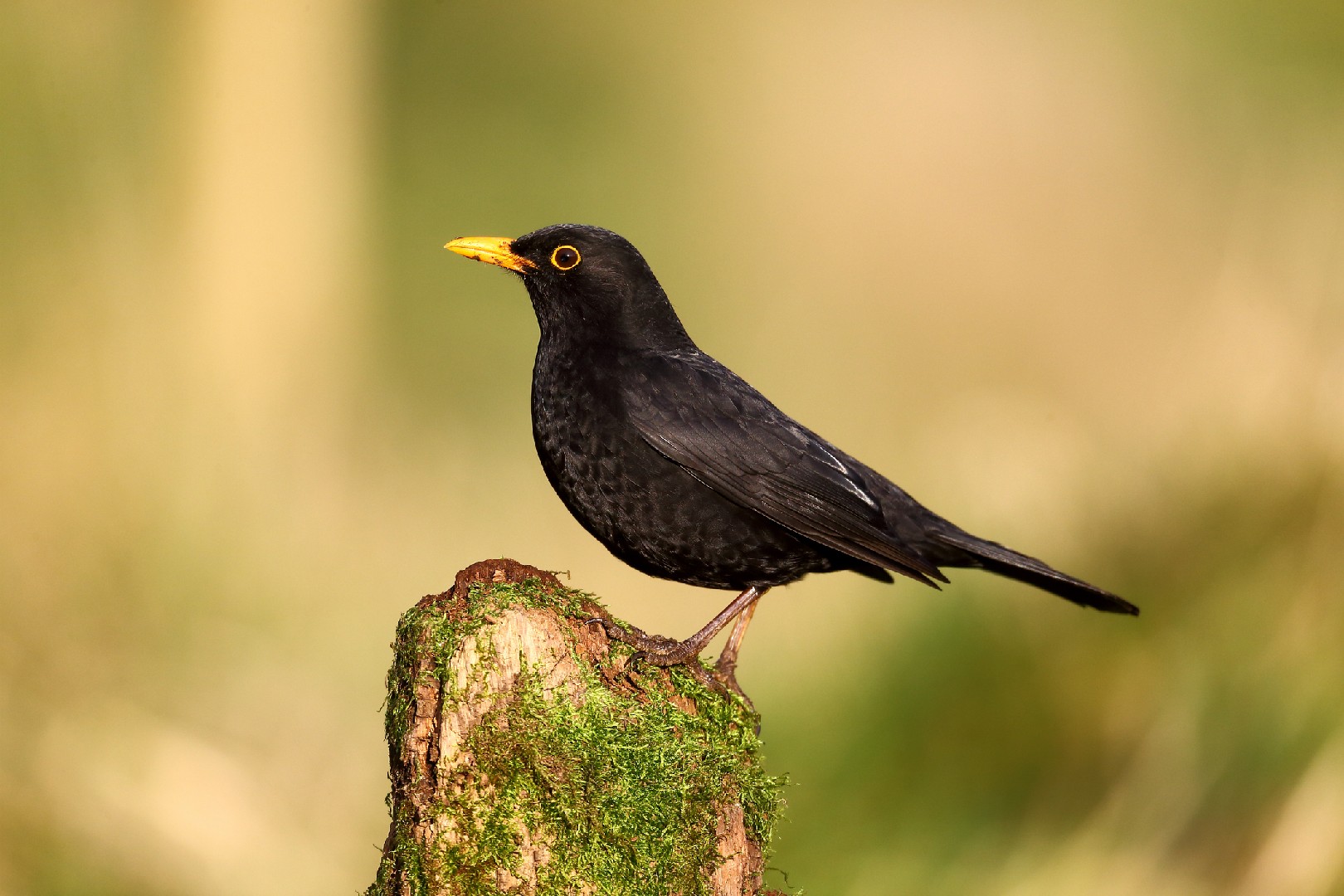Eurasian Blackbird
A species of True thrushes, Also known as Eurasian Black Thrush, Colley Bird, Blackbird Scientific name : Turdus merula Genus : True thrushes
Eurasian Blackbird, A species of True thrushes
Also known as:
Eurasian Black Thrush, Colley Bird, Blackbird
Botanical name: Turdus merula
Genus: True thrushes
Content
Description People often ask General Info

Description
Unafraid of humans, the dark-winged eurasian Blackbird has gained a great deal of cultural significance, mentioned in popular nursery rhymes and songs across the world. Elegant and with an appealing song, they can be aggressive when they are in their breeding period.
Size
27 cm
Life Expectancy
16 years
Nest Placement
Tree
Feeding Habits
Eurasian Blackbird is omnivorous, consuming insects, earthworms, seeds, and berries, with a preference for animal prey during breeding seasons. Foraging varies seasonally, focusing on fruits and berries, including garden exotics, in autumn and winter.
Habitat
Eurasian Blackbird occupies diverse habitats from dense deciduous forests to urban parks and gardens. Adapted to both natural and human-modified environments, they thrive where there is mature vegetation, open spaces for foraging, and moderate housing. They inhabit a range of altitudes, frequenting areas like mountainous regions, river valleys, and farmlands that provide suitable cover and foraging opportunities.
Dite type
Omnivorous
People often ask
General Info
Feeding Habits
Bird food type
Bird Feeder Type

Ground

Platform
Sounds
Call
Recording location: Belgium
Call
Recording location: Belgium
Song
Recording location: Belgium
Song
Recording location: Belgium
Behavior
The male common blackbird defends its breeding territory, chasing away other males or utilising a "bow and run" threat display. This consists of a short run, the head first being raised and then bowed with the tail dipped simultaneously. The female blackbird is also aggressive in the spring when it competes with other females for a good nesting territory, and although fights are less frequent, they tend to be more violent. 
Distribution Area
The common blackbird breeds in temperate Eurasia, North Africa, the Canary Islands, and South Asia. It has been introduced to Australia and New Zealand. Recoveries of blackbirds ringed on the Isle of May show that these birds commonly migrate from southern Norway (or from as far north as Trondheim) to Scotland, and some onwards to Ireland. Scottish-ringed birds have also been recovered in England, Belgium, Holland, Denmark, and Sweden. 
Species Status
The species is not believed to approach the thresholds for the population decline criterion of the IUCN Red List, and is therefore evaluated as Least Concern. In the western Palearctic, populations are generally stable or increasing, but there have been local declines, especially on farmland. 


Scientific Classification
Phylum
Chordates Class
Birds Order
Perching birds Family
Thrushes Genus
True thrushes Species
Eurasian Blackbird